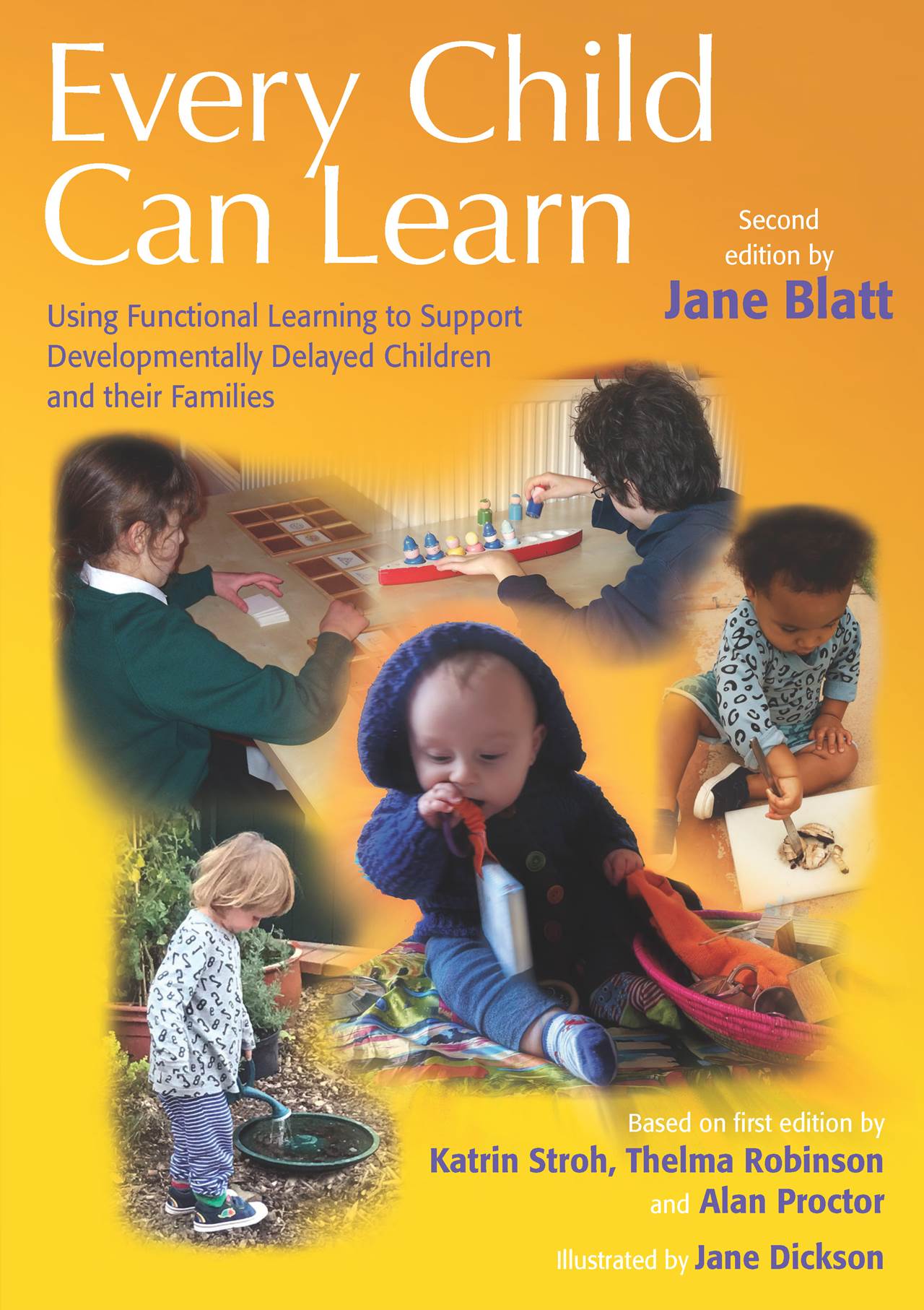EVERY CHILD CAN LEARN
This second revised edition of Every Child Can Learn describes how all children learn through play and acquire their Learning to Learn Tools in the first few years of their life. It shows how the Functional Learning Approach benefits children with developmental delay but also those children and families who need more support in their daily lives, including the important area of feelings and overcoming challenging behaviours. It discusses the integration of language and learning and how Feeding can be a very powerful therapeutic tool.
This book is suitable for parents and teachers and other professionals and those running courses for early years practitioners and child development training. It is particularly relevant today when families are needing more support with the surge in Home Schooling due to the pandemic and lockdown.
See below for the Website Library for Every Child Can Learn which is being developed.
Copies of EVERY CHILD CAN LEARN are available at £15 each plus p&p. Requests by email to janeblatt@hotmail.co.uk.
The book will also be available on
Print on Demand (Amazon)

- “I can’t think of anyone more qualified to produce a second revised edition of Every Child Can Learn than Jane Blatt. She trained with Dr Geoffrey Waldon, whose ideas form the central learning platform of Functional Learning, and has wide ranging experience as a Functional Learning Facilitator, participating in seminars, running Workshops and supervising other practitioners. I hope this book will help readers to discover a whole new way of looking at children’s development. The step-by-step guide to setting up Functional Learning Lessons and the wealth of activities described in detail, as well as the emotional support given to families, provide endless potential for helping children to develop a foundation that will support all their future learning.”
- … A Treasure Box of Ideas … “My colleagues and I have been using the first edition of Every Child Can Learn and it has been a pleasure to read and use as a basis for a new Learning Programme within the Institute. This new edition extends and develops the ideas and will help us gain deeper insight into helping children with developmental delay. I hope this new book will reach as many families and professionals as possible. I am sure many will immediately fall in love with it!”
Andre Zirnsak, Head of Outpatient Support, German Autistic Institute, Berlin / /
- “Every Child Can Learn provides a wonderfully clear account – a well thought through conceptual approach – that recognises the need to tailor interventions to individual needs and particular family circumstances. Most of all, it provides a way to help children move on step-by-step as they progress in their development. Anyone working with children who experience developmental difficulties will learn an immense amount from this splendid guidebook. I am delighted that Jane Blatt has made a revised edition, bringing to the task her rich experience using Functional Learning, to update the themes of the first edition.”
Professor Sir Michael Rutter, Institute of Psychiatry, King’s College London / /
WEBSITE LIBRARY
This Website Library replaces the CD Rom of the first edition and will be constantly updated and added to. Each Chapter within Every Child Can Learn makes reference to this new and growing website library showing examples of materials, other teaching ideas and video clips and photos supporting the Learning To Learn Tools.
The Functional Learning Chart (see above) shows how Waldon and Functional Learning dovetail. Waldon’s theory of General Understanding (see bottom of the chart) is based on early non-social play which can be separated out from what he calls Particular Understanding, or culturally specific social learning. The arrow between the two types of Understanding shows that each is influenced by the other. So, for example, in the natural course of their non-social play, ‘Brickbuilding’ (one of the Learning to Learn Tools) not only supports the child’s understanding of 3D in practical terms, but also later helps them adapt to predictions of other people’s behaviours, including culturally appropriate social distancing.
An important part of the integrated Functional Learning Approach is the work done with families. As you see from the Chart, the arrow shows the influence between the Lessons and Support for the Whole Family. The principles developed within this approach, including supporting the effortful integration of movement and space structuring; the use of language; how to manage challenging behaviours, plus support for parents and facilitators to understand their own expectations and anxieties underpins Functional Learning. Functional Learning also has the capacity to underpin any learning programme for any child.
INTRODUCTION TO THE WALDON APPROACH AND FUNCTIONAL LEARNING IN ENGLISHINTRODUCTION TO THE WALDON APPROACH AND FUNCTIONAL LEARNING IN GERMAN
This Learning Tree (see above) is based on the Pattern of General Understanding by Dr Geoffrey Waldon (1966). It shows how the Learning to Learn Tools of children develop from their early movements in the first three to four years of life.
The Tree – originally by Anne Brooks as a resource for a Workshop in Italy (2014) is redesigned by Jane Blatt for the second revised edition of Every Child Can Learn.
THE DEVELOPMENT OF EARLY GENERAL UNDERSTANDING VIDEO
The video (above) shows early movement patterns of a prone baby and then exploration of space when the child is sitting up and playing everyday objects. Later, a toddler demonstrates continuant behaviour when picking up and putting bricks into a container.
For Dr Waldon’s videos see above. These video clips were made over 30 years ago and show Dr Waldon working with David. They are part of a workshop he gave to teachers to illustrate how David’s Learning to Lear Tools were developing.
